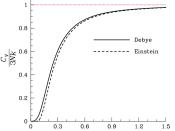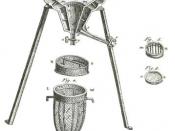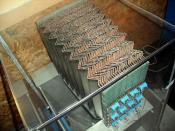This is a standardized lab write up for an American Advanced Placement Chem class dealing with the use of a calorimeter. In specific, the mass of a volatile unknown liquid was discovered with the use of the calorimeter.
Experiment Eleven - Heat Effects and Calorimetry
In this lab, molar mass of a volatile liquid was determined through the use of a calorimeter The lab validates the equation Q=S.H * M * T, by using the known or calculable values of QH20 and setting them equal in magnitude to Qmetal. This equation depends on the conservation of energy in the form of Delta T.
We concluded that the molar mass was around 74.81, and that the specific heat of this metal was about .334, This is reasonable; during our two trials, data that varied little led to calculations showing similar data.
Method of Operation.
First we will weigh the unknown metal.
We will then take the unknown metal and heat it to approximately 100 degrees Celsius. We will then measure out a mass of water into a calorimeter, and place the heated metal inside. We will record both the initial and final (equilibrium) temperatures of the water and metal. From these pieces of data, we will be able to calculate the specific heat of the metal, as well as the molar mass. Theory: It takes exactly 4.18 joules to heat one gram of water by one degree Celsius. This fact, the specific heat of water, is an extremely important part of calorimetry and thermodynamics. The idea behind this lab is that you can determine the specific heat of a metal placed in a calorimeter, if the initial and final heats of both the water in the calorimeter and the metal are known, and if the mass of both the water...



Good Lab
Good lab.
Well organized.
Good conclusion.
And excellent calculations!!
Needs bibliography
0 out of 0 people found this comment useful.